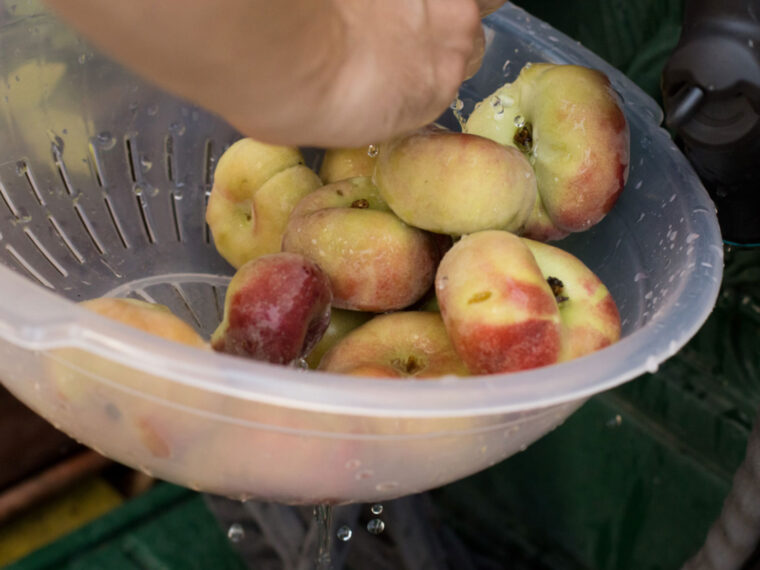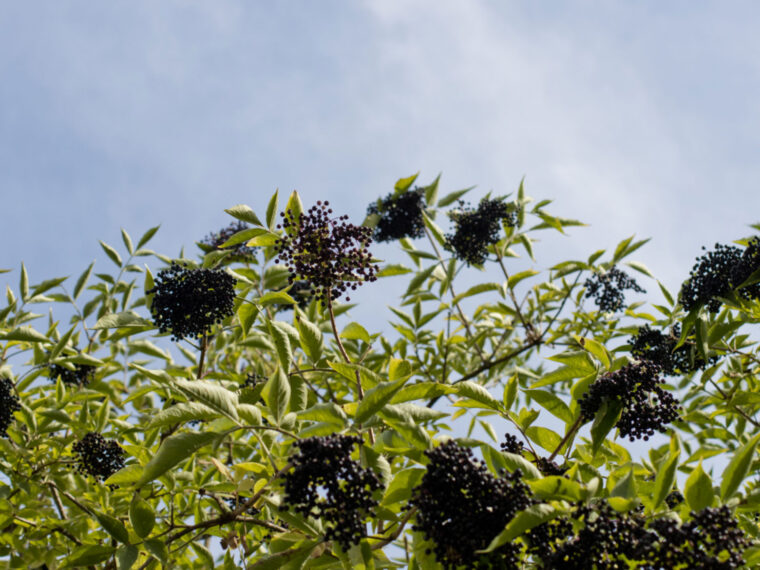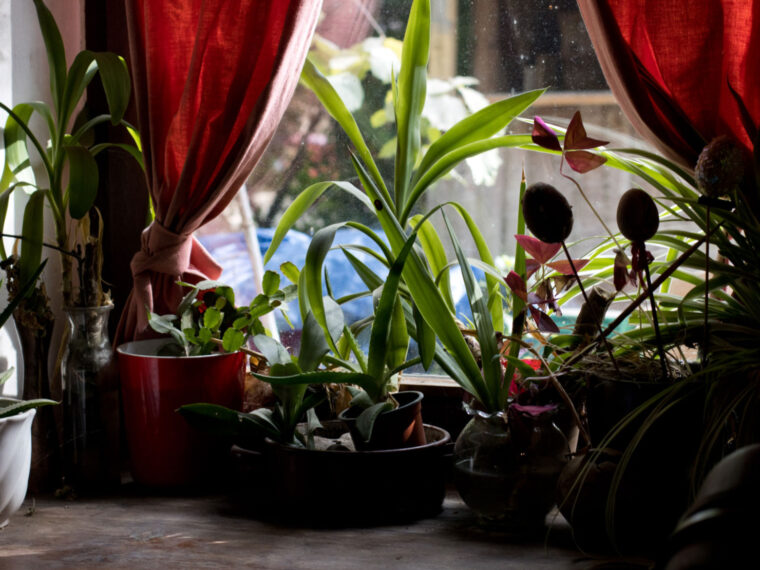
…mit einigem Gebackenem, viel Marmelade, einem Museumsbesuch (/imagine im MAK) – und wie immer, den besten Links der letzten Wochen.
Seit dem letzten Zuckersüß habe ich eine Steinobst-Galette, Zwetschgen-Walnuss-Feigenblatt-Tartelette, Limetten-Sandgebäck (aus meinem go-to-Knetteig für Tartes, z.B. hier), eine Pfirsich- Tarte Tatin (nach dieser Ananas Tarte Tatin) mit Basilikum, Brownies mit Erdnussbutter (nicht überzeugend, viel zu süß!) und Pasticiotti (bald im Blog!) gebacken.
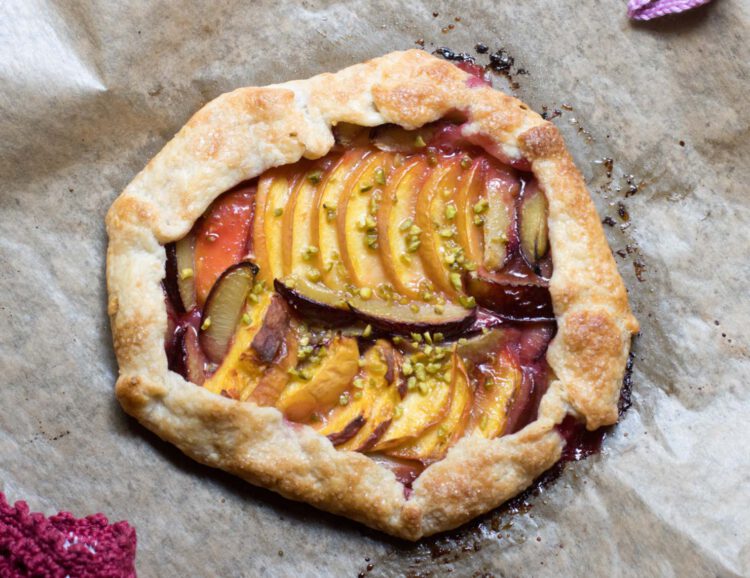
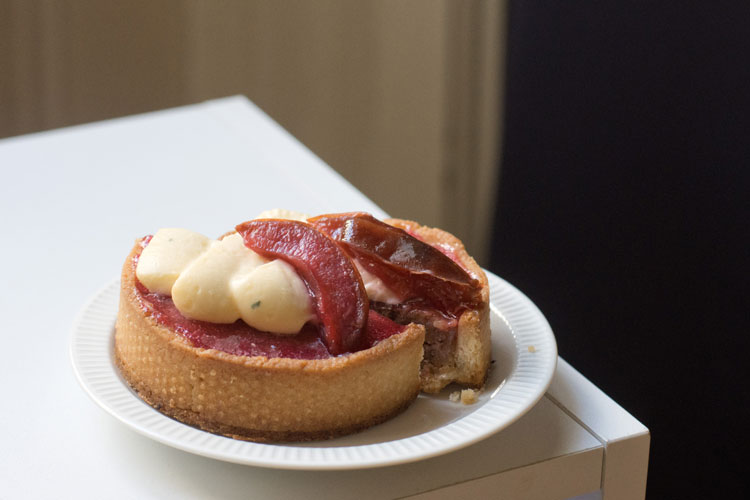
Ich habe zwei ganze Tage mit Einkochen verbracht und habe jetzt Pfirsich-Vanille-Marmelade, Aronia-Gelee, Griacherl-Vanille-Marmelade, Griacherl-Brombeer-Marmelade, Griacherl-Holler-Marmelade, Brombeer-Gelee, Griacherlsirup, Hollersirup und „Hexenpfeffer“, also unreife Hollerbeeren, die ich erst über Nacht eingesalzen, dann vier Minuten in Salzwasser blanchiert und schließlich mit heißem Essig (inkl 4% Salz) in Gläser gefüllt habe.
Dank vielen lieben Leuten von Instagram weiß ich jetzt wie Dirndln ausschauen und hab sie – schon eher reif – auch in Salz eingelegt, in der Hoffnung, dass sie irgendwann so schmecken wie die „Dirndl-Oliven“, die ich im Mai im Bootshaus am Traunsee gegessen habe…
Und dann habe ich auch nochmal Wassermelonenrinde gepickled, s. mein Rezept vor von ein paar Wochen.

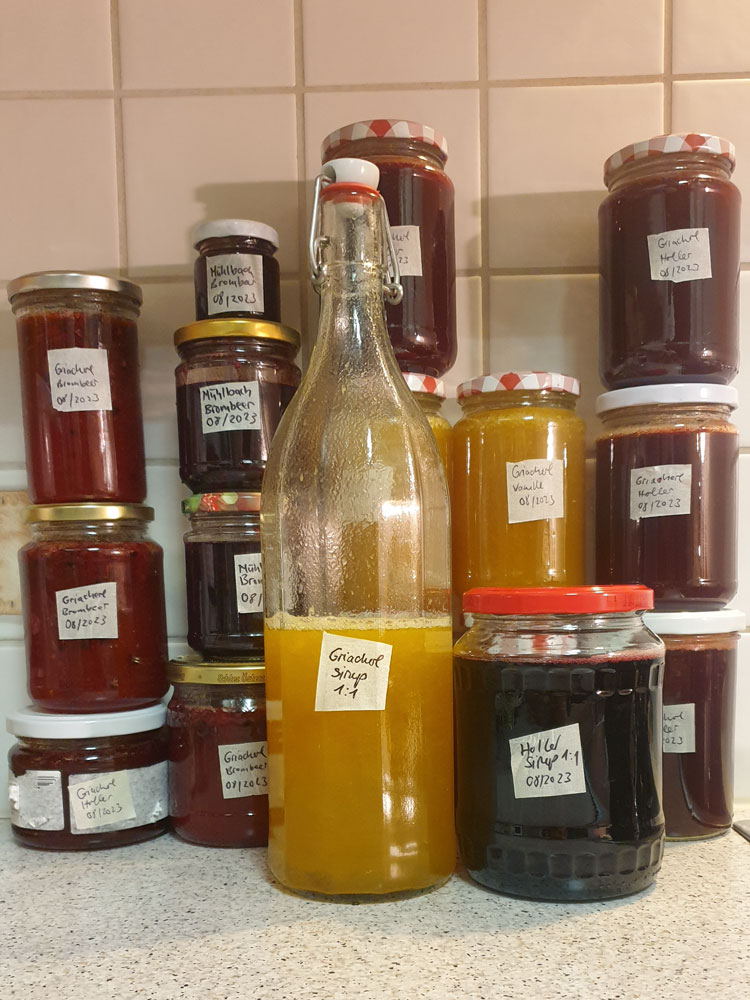
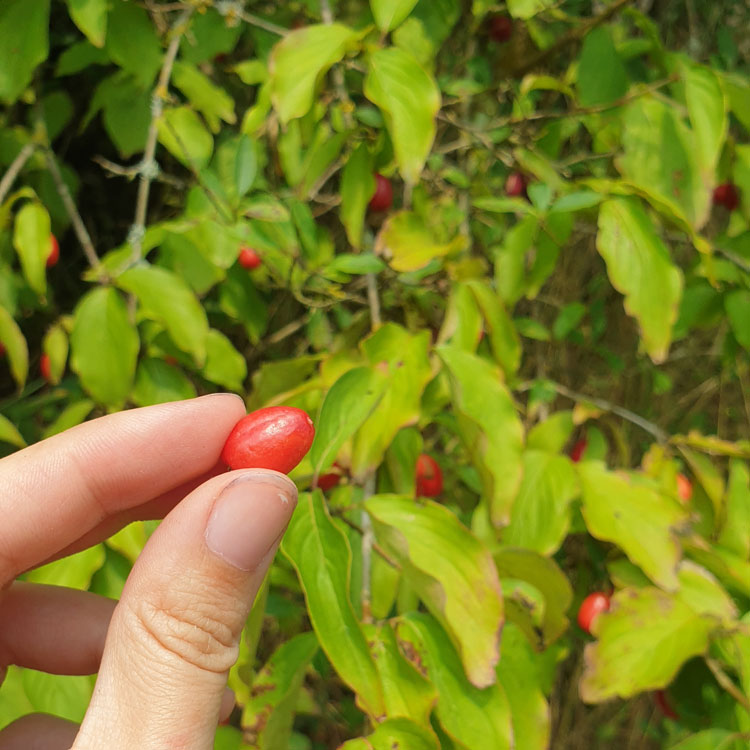
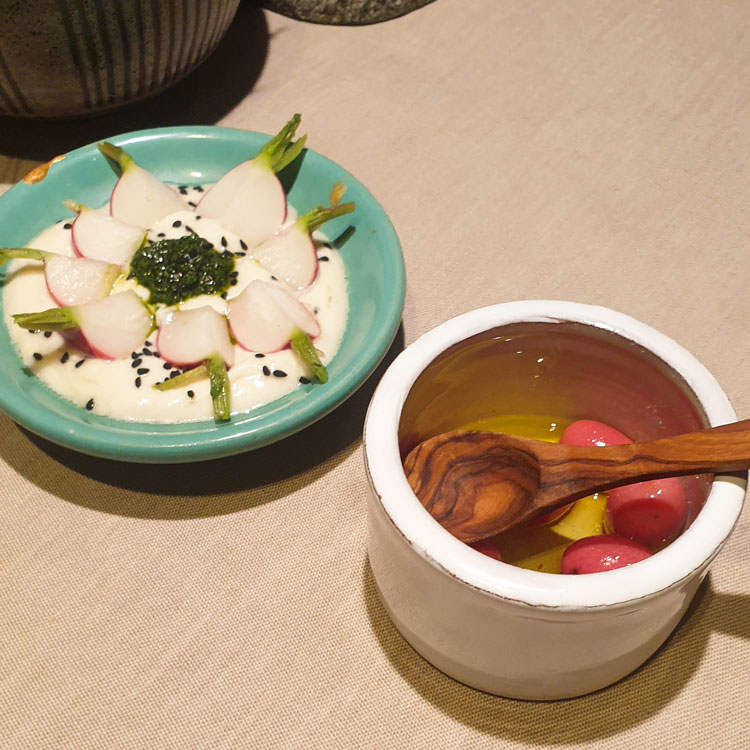
Gegessen
Eine Quiche mit Pie-Teig als Boden (super! und super blättrig), Topfenknödel mit Griacherln drin (das Frucht-zu-Teig-Verhältnis ist nicht so besonders überzeugend), Fritattensuppe, einen Reibeknödel mit Sauce von der Kinderkarte beim Gäubodenvolksfest.



Taktouka, Zaalouk, Msimn mit Mandeln drin (s. das „Grundrezept“ von 2014) und Gemüsetajine zu einer marokkanisch inspirierten Dinnerparty.
Gesehen: „/imagine. A Journey into the new virtual“ im MAK
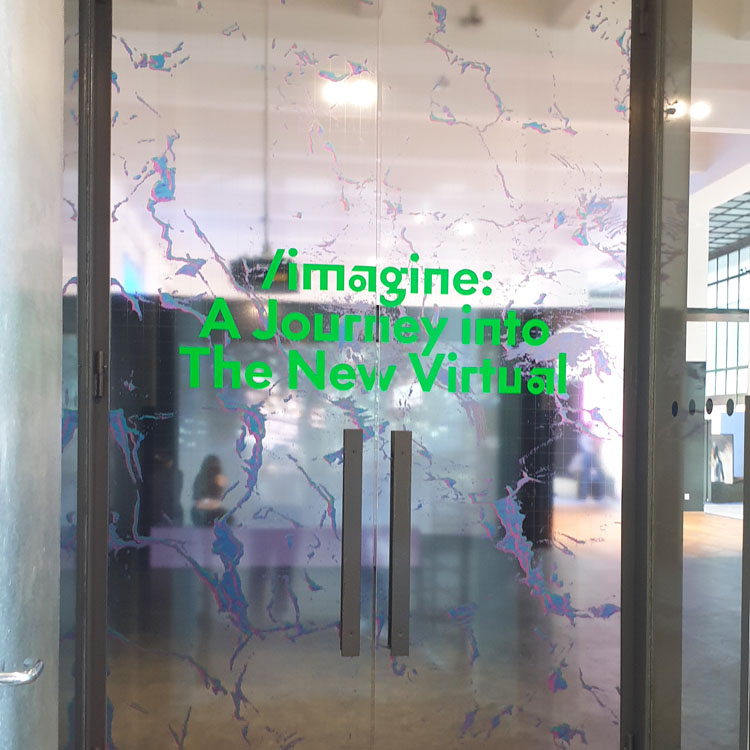
Ich war mit einer Freundin im MAK und weil wir nicht so viel Zeit hatten, entschieden wir uns für diese Sonderausstellung im Obergeschoss. /imagine. A Journey into the new virtual zeigt in vier „Kapiteln“ Zukunftsentwürfe. Schon der Ausstellungstitel bezieht sich auf künstliche Intelligenz, denn
/imagine: („stell dir vor“) ist der Befehl, der User*innen die Gestaltung eigener Architektur-Utopien mit der Software Midjourney ermöglicht. Auf Basis von beschreibendem Text generiert eine KI Bilder, die unendlich variiert werden können.
Beschreibungstext /IMAGINE. MAK
und wie ich mir danach denken hätte können, geht es hauptsächlich um KI und sonstige Buzzword-Technologien. Die Ausstellung ist auch online anzuschauen, inklusive ausführlicher Texte zu den einzelnen Werken: thenewvirtual.org.
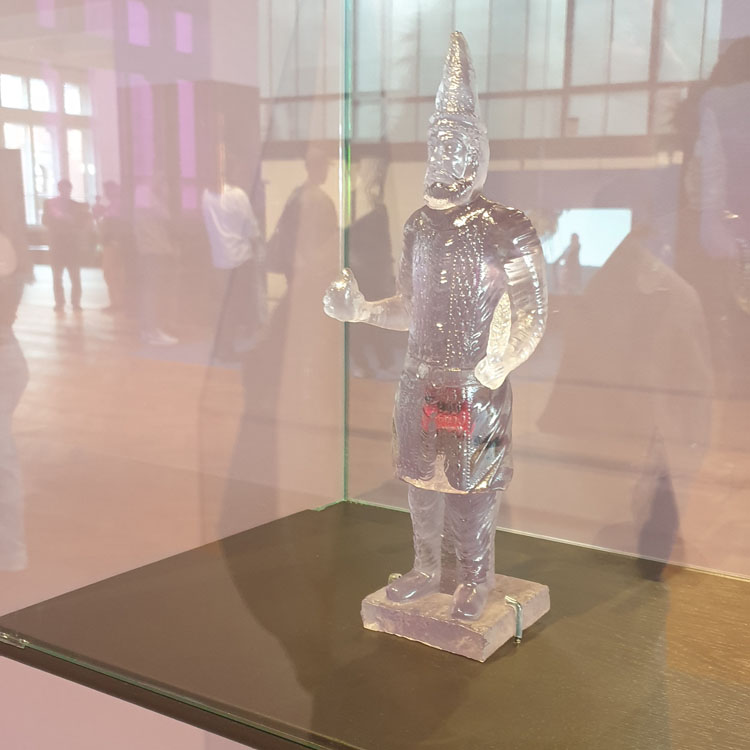
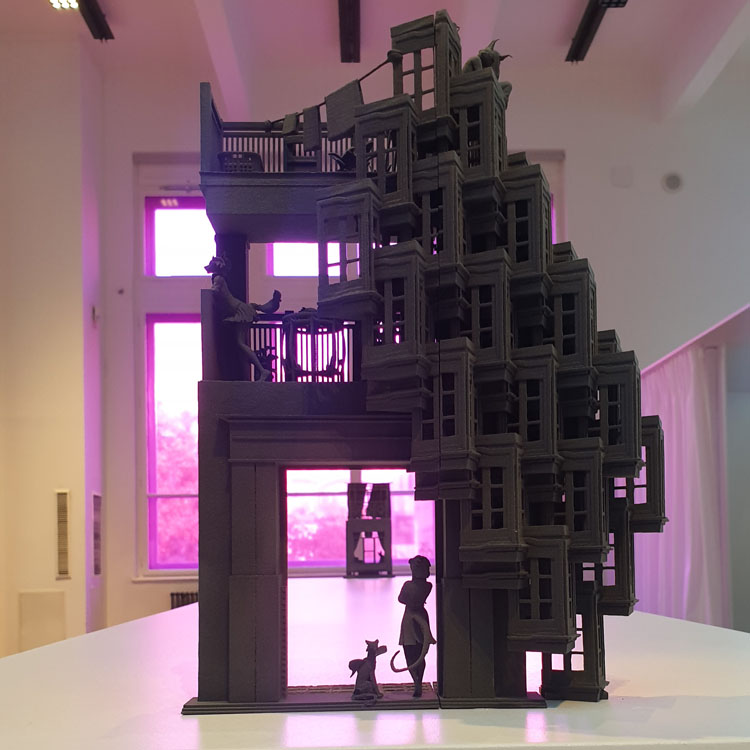
Morehshin Allahyari hat für Material Speculations: ISIS, 2015/16 vom IS zerstörte Monumente in Miniatur 3D-gedruckt und darin Datenträger eingeschlossen, um auf die (westliche) digitale Aneignung dieser kulturellen Artefakte hinzuweisen.
Die zwei sich gegenüberstehenden Häuser The View (2023) von Genevieve Goffmann – ebenfalls 3D-gedruckt – verstand ich gar nicht (irgendwas mit Geschlechterrollen und der Moderne), aber fand sie hübsch anzuschauen, vor allem im Gegenlicht der lila beklebten Fensterscheiben.
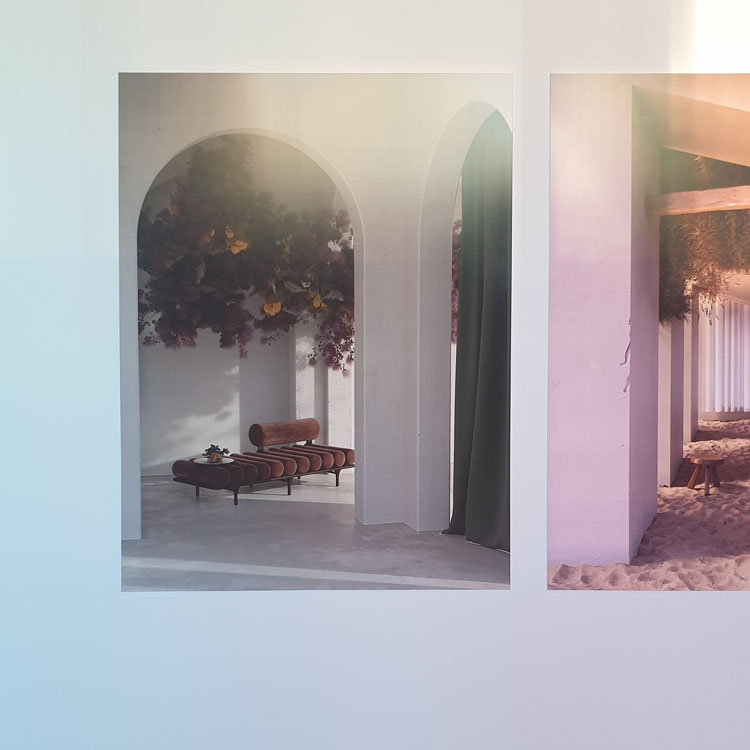
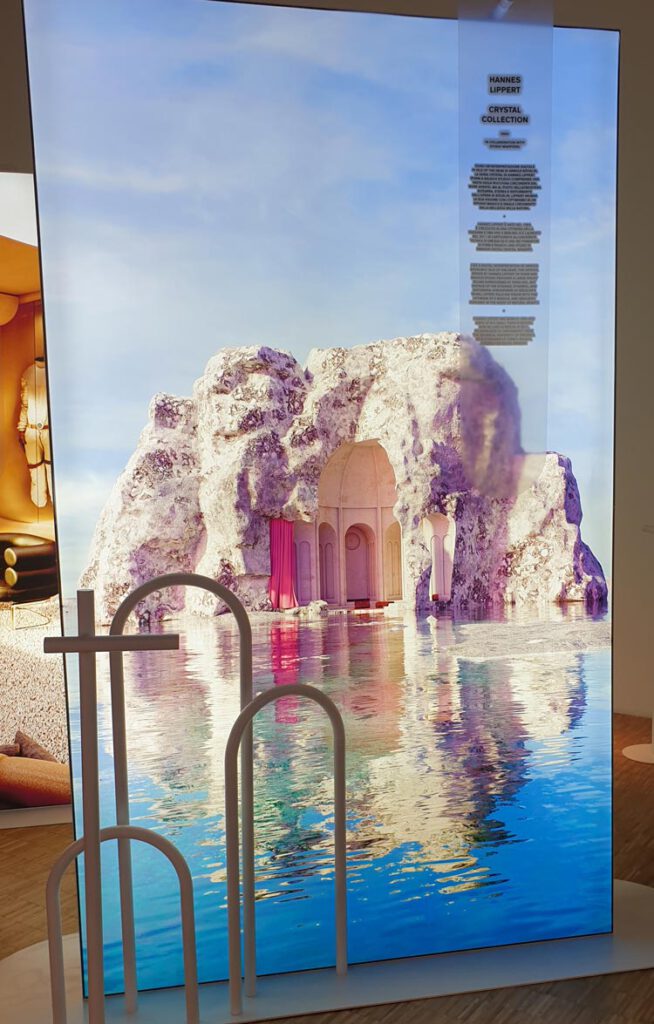
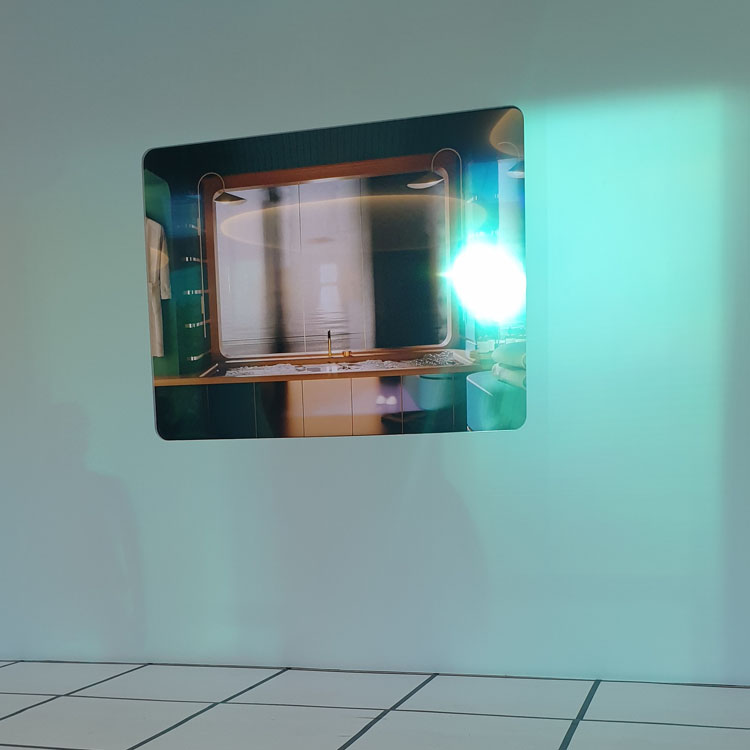
Die Renderings von unwirklich wirkenden Interiors No Use For A Name – Daydreamers (2020) kamen mir wahnsinnig bekannt vor, und tatsächlich, bei der Triennale in Milano vergangenen Herbst hatte ich im tschechischen Pavillon Bilder vom selben Künstler, Hannes Lippert aka Form und Rausch gesehen.
Quantum Express von Alexis Christodoulou (2022) hat mich von allen Sachen in /imagine am meisten in den Bann gezogen, so wie eines dieser oddly satisfying Reels auf Instagram. Zu sehen ist ein luxuriöses, sich wandelndes (vom Speisewagen zum Sofaeck zum Spa) Zugabteil, das an verschiedenen Landschaften vorbeizieht. Als Besucher_in kann man sich davor, eingerahmt von zwei parallel stehenden Spiegelwänden auf einem blobartigen Sofa niederlassen und in der Endlos-Animation verlieren.
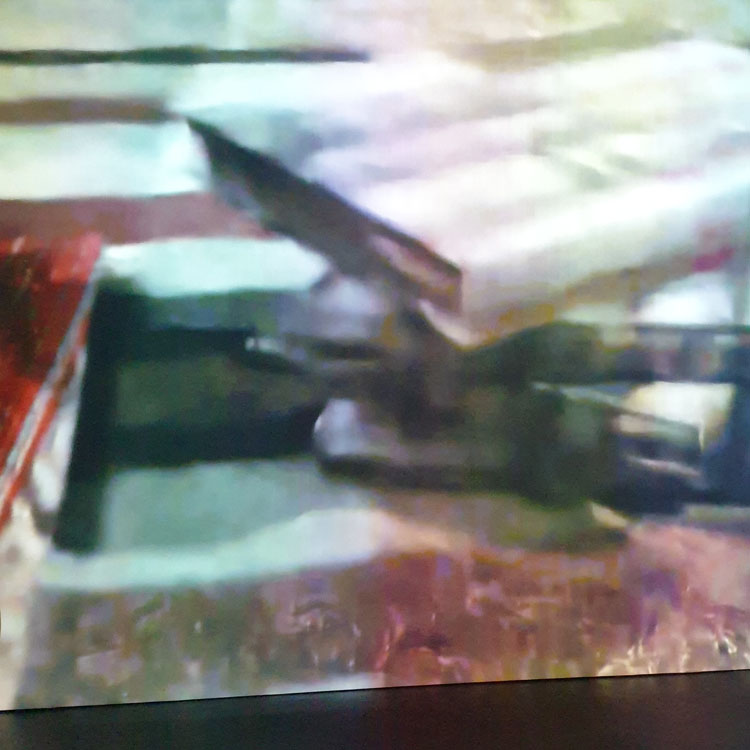
Von Simone C. Niquille’s HOMESCHOOL (2019) wurde mir leider so richtig übel, aber ich fand es nichtsdestotrozd höchst interessant: Als Zuschauer_in in einem abgedunkelten Raum, auf transparenten Gymnastikbällen sitzend, folgt man wandfüllend der Perspektive eines Staubsaugerroboters, der gerade „lernt“ seine Umgebung „wahrzunehmen“. Dabei hört man dessen inneren Monolog („The limits of my categories mean the limits of my world…“) und bekommt dessen „Verwirrung“ mit, z.B. wenn die Bilderkennung alles als Kloschüsseln identifiziert oder Schusswaffen mit Dekoobjekten verwechselt.
Die AR/VR-Elemente in der Ausstellung habe ich weitgehend übersprungen, genauso wie alles wo „Blockchain“ oder „Web3“ dranstand. Ersteres finde ich persönlich anstrengend, letzteres Energieverschwendung und/oder ideologisch problematisch. Auch die meisten AI-generierten Werke fühlen sich jetzt schon überholt/repetitiv an, „irgendwas mit Midjourney“ hat seinen Reiz verloren, nachdem es gefühlt jeder und sein Nachbar nutzt. Das einzige, an dem ich diesbezüglich hängengeblieben bin, war My Mid Journey Trash Pile von Leah Wulfman (2022):
Leah Wulfman used the AI software Midjourney to generate images of buildings made from various types of trash. […] Wulfman commissioned an oil painting factory in a village in China—known for producing replicas of master painters—to bring five of the images to life with the Impressionist-style painter Ou Wen, who is trained on the work of Monet. The five paintings are displayed on a large, curved wallpaper showing the thousands of various trash piles created by the Midjourney algorithm.
thenewvirtual.org

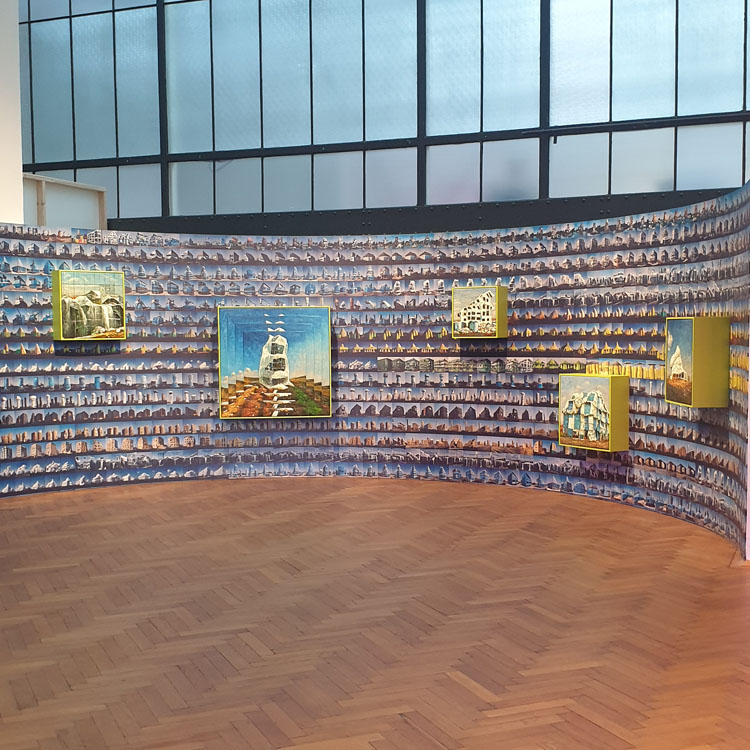
Leah Wulfman wird als Carrier Bag architect vorgestellt, was Carrier Bag in dem Kontext meint, ist leider nirgends erklärt. Ein bisschen herumgooglen ergab, dass es sich dabei offenbar um einen Verweis auf Ursula K. LeGuins Essay „The Carrier Bag Theory of Fiction“ von 1986 handelt, auf die sich auch der türkische Pavillon der diesjährigen Architekturbiennale in Venedig bezieht:
The Carrier Bag Theory of Architecture begins with revealing the story of the neglected. Though their absence is unnoticed, they change the whole scenography once they are uncovered and pulled on stage. What if we listen to and understand the stories of abandoned buildings, rather than focusing on more heroic, successful examples?
A Manifesto for The Carrier Bag Theory of Architecture. Türkiye Pavilion 18th International Architecture Exhibition La Biennale di Venezia
Den Essay von LeGuin (deren Roman „The Dispossessed“ ich vor nicht allzu langer Zeit gelesen habe) konnte ich online leider nicht finden, aber immerhin den Wikipedia-Artikel dazu, der einerseits die vielen Einflüsse auf den Text (Gerda Lerner, Virginia Woolf, 2001 A Space Odyssey) listet, andererseits eine Podcastfolge von Julia Grillmayr’s Superscience Me: Der Realismus der Erdäpfel.
Und so hat mich eine Aussstellung, die mich nicht besonders angesprochen hat, beim Versuch, „nur mal schnell“ drüber zu schreiben, in ein einstündiges, hochinteressantes Recherche-Loch geschmissen, aus dem ich mit einem noch zu lesenden Essay und einem zu hörenden Podcast wieder aufgetaucht bin. Wegen solcher Abzweigungen dauert es oft Stunden, diese Zuckersüß-Posts zu schreiben, aber genau deswegen macht es auch so viel Spaß, dass ich es nach mehr als zehn Jahren immer noch (fast) jeden Woche tue. Ah ja, falls ihr nach dieser Beschreibung trotzdem noch in /imagine gehen wollt, es läuft noch bis 10. September im MAK.
Außerdem gesehen: Barbie, zum zweiten Mal, diesmal auf deutsch, wo sehr viel Wortwitz verloren ging.
Gestrickt
Überraschenderweise bin ich mit meinem einfarbigen Rumble Raglan nach Lydia Morrow fertig geworden. Und ich denke schon über meine nächsten Dritt- und Viert-Strickprojekte nach. Weit oben auf der Liste, wenn auch schon fast außer Saison: Das „Garnreste“-Neckholder-Wasserfall-Minikleid, das Doja Cat im Say So-Video trägt. Es stammt aus der Frühling-Sommer-Kollektion 2020 des Labels No Sesso und ist für meinen Geschmack *ein bisschen* zu tief dekolletiert, gut, dass ich mir das einfach so stricken kann, wie ichs gerne hätte…
Gelesen
Die ersten paar Seiten von Alicia Kennedy’s No Meat Required und weiter in Christian Krachts Imperium, das ich aber immer noch nicht mag.
Veröffentlicht
Im Blog: „Schwein und Zeit“ – Fahim Amir, Steinobst-Galette, Zwetschgen-Walnuss-Feigenblatt-Tartelette, TIAN
Anderswo: Nix, Ferien (aber ich schreib grad an was, das ~bald~ erscheint!)
Hier folgen meine liebsten Links der letzten Woche.
Rezepte
Process pieces: Smoked Cherry Jam + Bitters, plus Dried Smoked Peaches – Root Kitchens
Das eigentliche Rezept ist paywalled, aber die Idee find ich schon verlinkenswert.
Best Nisu Recipe – How to Make Finnish Cardamom Coffee Bread – Food52
Kardamom und Kaffee mag ich sehr, so einen Laib könnte ich mal backen…
Best Peanut Butter Cookie Bake Off – The Pancake Princess
Dieser Post hat in mir das dringende Bedürfnis ausgelöst, baldmöglichst Erdnussbuttercookies zu backen, wohl die von Jessie Sheehan.
Tahini and halva brownies recipe | Ottolenghi Recipes
Klingt ziemlich süß, aber auch sehr gut.
Squash Casserole from ‚Mastering the Art of Southern Cooking‘ – Serious Eats
Zucchini mit Cheddar und Pecans überbacken.
Texte
Next slide, please: A brief history of the corporate presentation – MIT Technology Review (via Links I Would Gchat you)
Der kulturelle Einfluss von PowerPoint wird glaube ich wirklich unterschätzt – dieser Text erzählt, was vorher da war (was für eine Industrie!).
Before PowerPoint, and long before digital projectors, 35-millimeter film slides were king. Bigger, clearer, and less expensive to produce than 16-millimeter film, and more colorful and higher-resolution than video, slides were the only medium for the kinds of high-impact presentations given by CEOs and top brass at annual meetings for stockholders, employees, and salespeople. Known in the business as “multi-image” shows, these presentations required a small army of producers, photographers, and live production staff to pull off. First the entire show had to be written, storyboarded, and scored. Images were selected from a library, photo shoots arranged, animations and special effects produced. A white-gloved technician developed, mounted, and dusted each slide before dropping it into the carousel. Thousands of cues were programmed into the show control computers—then tested, and tested again.
GRID WORLD by Alexander Miller
Ein Essay über Gitterlinien und Infrastrukturen. Gefunden bei thehtml.review.
I think that if you want to know how something is made, you should look for the grids. They are the ever-present, behind-the-scenes structure of our cities, our machines, our homes, and our lives. You’ll find the grid in the artist’s studio, in the patterns of the textile weaver’s pattern book, in the architect’s floor plan sketches, in the engineer’s CAD software; even the monospaced fonts that programmers use fit to the grid. The grid can be found throughout history, from ancient Egyptian architectural plans to medieval European embroidery designs. These artifacts trace the practitioner’s process along the grid’s axial constraints.
‘Bama Rush’ takes us into the world of Southern sorority fashion and hierarchies – CNN Style
Was für eine seltsame Parallelgesellschaft! (Im Sommer 2017 war ich zufällig in den Sorority Rush an der University of Kentucky gestolpert und war schon damals recht irritiert davon, s. Eine Reise in die USA, Pt. 2:KY)
So why the emphasis on dress? Historically, according to studies of and interviews with sorority members throughout the 20th and 21st centuries, sororities have chosen pledge classes with an aim to ascend or maintain their place within the Greek tier system, an arbitrary and unofficial ranking of sororities and fraternities based primarily on the physical attractiveness of its members. (Active University of Alabama sorority members told “Bama Rush” director Rachel Fleit that the tier system, whether they believed in its merits, was decided by fraternity men.)
Culture Study Meets Bama RushTok – by Anne Helen Petersen
Ein Deep Dive in die Sorority-TikTok-Bubble.
Having a lot of money is important but it’s not enough, at least not for the most exclusive sororities. You have to be a certain kind of rich, and wield that wealth in a certain kind of way. The women making Tiktoks of their #OOTDs, listing out their expensive jewelry — it might seem counterintuitive, but they’re doing it wrong. The consumption is too conspicuous; the performance too public. It’s all very old money new money, very East and West Egg, very “like us” vs. “not like us.”
There’s a reason, in other words, that so many of the girls doing #OOTDs are not from the South. They can approximate the aesthetic but they don’t know all the other unwritten rules. That doesn’t mean they won’t get a bid to a sorority, it just means they don’t have entrance to the highest echelons of campus power.
Gen Z loves clothing hauls and hates landfills. Enter the style bundle. – The Washington Post (Via Links I Would Gchat you)
Ebenso faszinierend.
More and more social-media-savvy thrift devotees are making a career out of hours spent combing through thrift shop racks. Amid a trend cycle in hyperdrive thanks to TikTok, these online stylists have found a niche selling secondhand clothes that give eco-conscious Gen Z customers the thrill of a shopping spree — without the guilt of a Zara haul. They promise to pluck castoffs with cachet from the bargain bin — and pair them with other pieces to yield an Insta-worthy ensemble. And since they’re shopping at the Salvation Army — not Bergdorf Goodman — you don’t have to be Sofia Richie or Bella Hadid to enlist their relatively affordable services. As such, they’re democratizing a domain once reserved for the rich.
From the Women’s World Cup to Wimbledon, a Victory Everyone Can Share – The New York Times (via Anke Gröner)
So viel unverhohlener Sexismus.
Uniforms in women’s sports have effectively evolved in two ways. On one hand, they were simply downsized versions of men’s styles, as in basketball and soccer. (Nike did not start making women-specific World Cup kits until 2019 and did not re-engineer the W.N.B.A. jerseys until 2021); on the other, they were designed to be expressly feminine, like tennis dresses, field hockey skorts and the highly sexualized abbreviated, bathing suit-like bras and bikinis worn by track athletes and beach volleyball players.
Either way, they were essentially tailored for men — either literally, meaning they didn’t fit female bodies correctly, or for the male gaze.
How the Hugo Spritz Got Dubbed the Drink of Summer | PUNCH
Den Hot Take den Hugo zum universellen Drink des Sommers 2023 zu machen kann ich gar nicht nachvollziehen, mir scheint, in Zentraleuropa ist er seit mindestens zehn Jahren Standard, selbst in den uninspiriertesten Café-/Bar-Karten..
If every era gets the cocktail it deserves, then this is ours: light, low-alcohol, and… a little boring? Compared to previous Drinks of the Summer, the Hugo is downright unassuming. “They kind of look watery, right?” says Michael McCaulley, beverage director at the Philadelphia-based Schulson Collective restaurant group. And yet this is perhaps a strength. “Aperol spritzes and Espresso Martinis have gotten so popular and so recognizable that I think people love to hate them a little bit,” argues Sarah Louise Rhodes, creator of The Spritz Effect, whereas the Hugo is “a little more under the radar.” It is not simple, but rather tossed-off, effortless, un-made-up and freshly showered—the opposite, in some ways, of its louder summer siblings.
Pistachios Are Quiet Luxury – Taste
Noch so ein Hot Take! (In meinem Kopf sind Pistazien ultraluxuriös, sie sind einfach so mords teuer!)
Shah said that grotesque layerings, like caviar on lobster on Wagyu steak, topped with gold leaf, are “bombastic luxury. It doesn’t have any meaning.” Others: Tagging a hard-to-get-into restaurant or a cool bagel spot with a long line on Instagram is a flex, “anything with truffle is a move,” and “the Champagne-fried-chicken-caviar thing is a status symbol.” Even if pistachio is the color of money, it doesn’t have such an ostentatious presence. Like wealth, it whispers.
The Best Apples Look Like Potatoes – Taste
Den Insta-Account von @pomme_william (vormals @pomme_queen), der Protagonist dieser Geschichte ist, mag ich schon lange sehr.
However, if you look hard enough—and cross a few state lines—there’s a world of lumpy, delicious heirloom apples waiting for their moment of extremely niche fame. Finding and tasting these obscure apples will take everything you’ve come to expect from an apple and toss it out the window. Soon you’ll be seeking out rough, brown-skinned fruit that look like old rocks because they taste incredible. You’ll learn how to spell “Ashmead’s Kernel,” and then you’ll evangelize about them. And maybe, just maybe, after a few years of stalking orchards every fall, you’ll run into a few in the grocery store.
Of Recipes & Resistance – From the Desk of Alicia Kennedy
Alicia Kennedy denkt weiter über Essen und Politik nach:
I’ve been considering this question, “Is there such a thing as a leftist recipe?” because I’ve been considering it for as long as I’ve been taking food seriously. I was convinced, 12 years ago when I stopped eating meat, that it was a wildly reasonable action to take against various exploitations—planet, worker, animal. It was—and is, I still believe—the least I can do on a daily basis to say that these exploitations won’t be done for the sake of my sustenance. I was convinced—a conviction that was very U.S. of me and not rooted at all in history or even contemporary global politics—that not eating meat was always a radical choice in favor of social justice and progression toward an equitable future. I’ve been disabused of this notion over time, again and again, in favor of having to acknowledge that my politics and the politics of others who share my beliefs around food do not always align.
#158: Do we “live in hell”? – by Haley Nahman – Maybe Baby (via Links I Would GChat you)
Gedanken zu überbordendem Zynismus online.
For the terminally online media class, refrains like “we live in hell” or “America is a dumpster fire” became a shorthand for associating with the left. To publicly proclaim one’s hope lost was, weirdly, a kind of intellectual flex, like hating the popular kids, or listening to the band before everyone else.
Frauen schlagen Wellen in der marokkanischen Surf-Community – VICE
Ich finde diesen Text (im Original auf französisch erschienen) zwar weder besonders gut geschrieben/übersetzt, noch besonders überzeugend in der Argumentation, weil die sich gar nicht mit meiner Wahrnehmung deckt (an dem Strand auf den Fotos habe ich 2015 selbst monatelang Surfstunden genommen – und es doch nie gelernt).
Obwohl der Sport unter Frauen beliebter wird, ist es als Frau an einem marokkanischen Strand oft schwierig. „Wenn ich nur mit Freundinnen unterwegs bin, treffen wir manchmal auf feindselige Leute“, sagt Rabbaa. „Wenn ich mit einem Mann gehe, ist alles in Ordnung.“ Sobald die Surferinnen ihre Neoprenanzüge anziehen, ändert sich diese Dynamik oft. „Wenn die Leute dich mit einem Surfbrett sehen, sprechen sie dich nicht an, du wirst nicht sexuell belästigt“, fügt El Amraoui hinzu. „Entweder denken sie, du wärst reich und gehörst zu einem der Surfclubs, oder dass du nur trainieren und nicht flirten willst.“
Hollywood’s Future Belongs to People—Not Machines – WIRED.com
Noch so ein Text, der mich argumentativ nicht ganz überzeugt (weil all over the place), aber ein paar Takes fand ich sehr interessant.
But in a world where everyone is a brand, no one can be a star. And influencers have discovered what porn performers already knew: Platforms are fickle. Content guidelines, corporate ownership, and payment structures can change overnight, without explanation. Much like humans have permanently altered and unsettled the natural world, online ecosystems for fans and creators have experienced rolling shocks in response to technology. Just as users find another den, it’s burned down. The story of the internet is the story of America itself: a seemingly limitless landscape transformed into a shopping mall populated by the same handful of brands, products, and voices.
Audio/Video
Das getupfte Band – Sherlock Holmes
Dieses Hörspiel vom BR wurde 1962 (!) produziert und ich frage mich, ob die Sprache der Figuren damals auch schon altmodisch klang (die Geschichte spielt ja in den 1880ern). Ich kenne nur zeitgenössische Sherlock Holmes-Adaptionen, wie rassistisch und antiziganistisch das Original offenbar ist, war mir nicht bewusst.
„Die Mondnacht“ von Stanislaw Lem · ARD Audiothek
Noch so eine alte Produktion (1976), alt klingt sie aber gar nicht. Und Stanislaw Lem finde ich ziemlich interessant, seit ich Der futurologische Kongress gelesen habe.
Every Little Thing – Gimlet
Eine ehemalige Radiokollegin hat mir diesen leider eingestellten Podcast empfohlen, weil er so schön gemacht ist. Er beantwortet mithilfe von Expert_innen scheinbar banale Fragen (When Did Pants Become a Thing? Why Pigeons Took over Cities) von Hörer_innen, die selbst ziemlich viel vorkommen, und spart dabei nicht mit Soundeffekten und Wortwitzen.
Labi Siffre – I Got The… (1975)
Ein Freund hat neulich in einem Café Schallplatten aufgelegt – und ich hab quasi die ganze Zeit nur shazamed…
George McCrae – I Get Lifted
s.o.
Leon Haywood – I Wanna Do Something Freaky To You (1975)
s.o.
A Tribe Called Quest – Bonita Applebum
s.o. – Dieser Song sampled den selben Sound wie die Fugees-Version von Killing me softly, und hat mich damit in eine who sampled-rabbit hole geworfen…
▶︎ Hayati 89 | Moving Still
Der Track taugt mir.
Sonst So
Autumn Forager (Jennifer Brou für Laine) – ravelry.com
Die Strickmuster dieser Designerin finde ich ziemlich spannend. Hier: ein rüschliger gestreifter Pulli.
Senner (Jennifer Brou für Woolfolk) – ravelry.com
…oder dieses Colorwork!
@artisan_embroidery / Jordan Cunliffe
Diese Textilkünstlerin visualisiert mit Stickereien aus verschiedenen Materialien Daten. Das Papierschnipselgewebe zu „Life admin“ und die Rückseite dieser monoton wirkenden Stickerei finde ich sehr toll.
Backkatalog

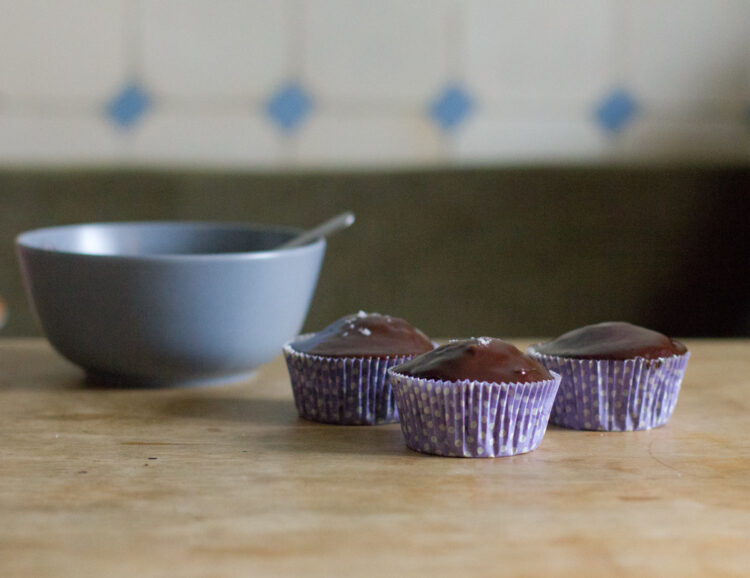
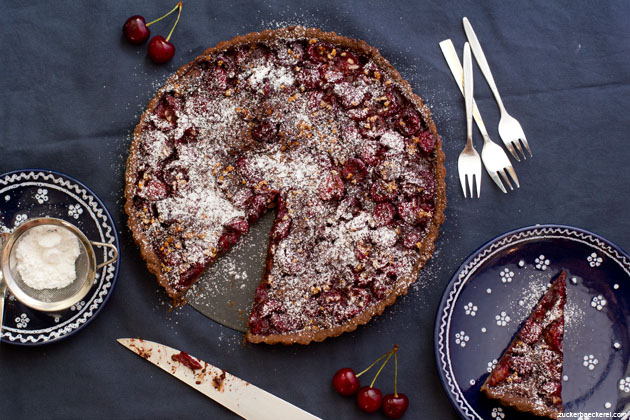
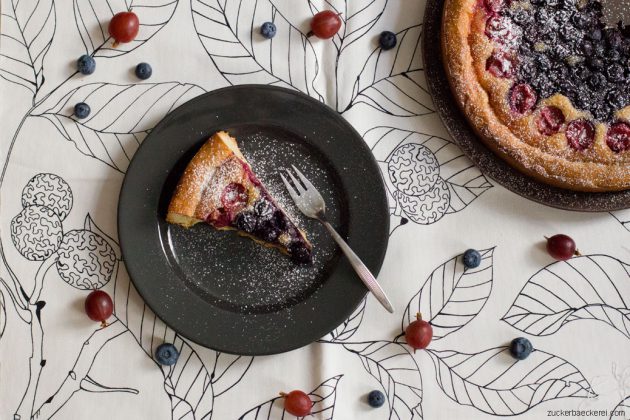
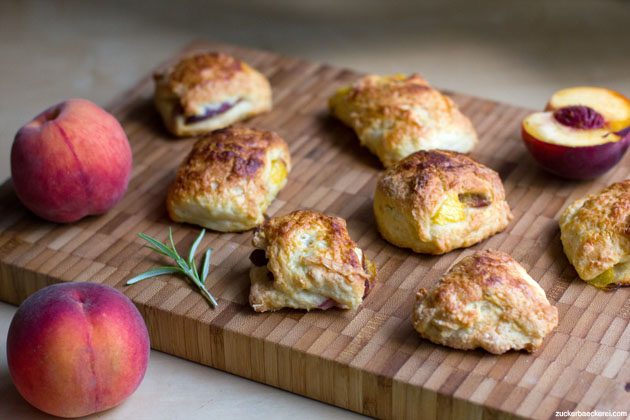

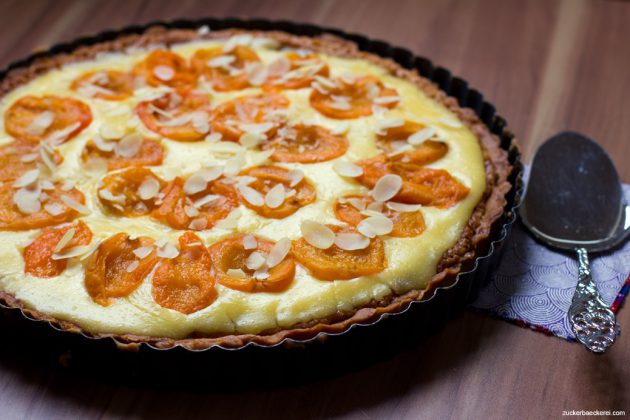



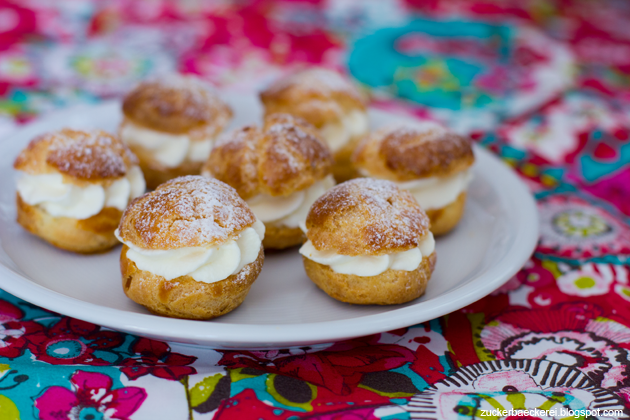

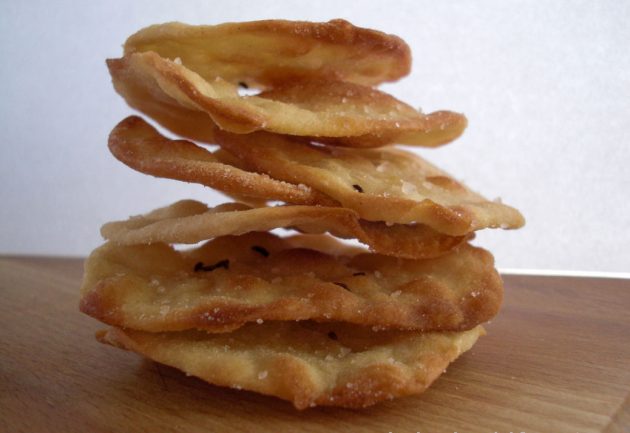
- 2022: Schoko-Minz-Törtchen
- 2021: Mandel-Schoko-Cupcakes (ohne Milchprodukte!)
- 2020: Schoko-Kirsch-Mandel-Tarte
- 2019: Stachelbeer-Frangipane-Tarte
- 2018: Pfirsich-Rosmarin-Scones
- 2017: Eine Reise in die USA, Pt. 1: NY
- 2016: Frangipane-Tarte mit Kardamomcreme und pochierten Marillen
- 2015: Bastilla
- 2014: Msimn – Marokkanische Pfannkuchen
- 2013: Griacherl-Ingwer-Chutney
- 2012: Windbeutel
- 2011: Kaffeebaiser
- 2010: Knusperfladenbrot

 Hi, ich bin Jana. Seit 2009 veröffentliche ich hier wöchentlich Rezepte, Reiseberichte, Restaurantempfehlungen (meistens in Wien), Linktipps und alles, was ich sonst noch spannend finde. Ich arbeite als Redakteurin bei futurezone.at, als freie Audio-/Kulinarikjournalistin und Sketchnoterin. Lies mehr über mich und die Zuckerbäckerei auf der
Hi, ich bin Jana. Seit 2009 veröffentliche ich hier wöchentlich Rezepte, Reiseberichte, Restaurantempfehlungen (meistens in Wien), Linktipps und alles, was ich sonst noch spannend finde. Ich arbeite als Redakteurin bei futurezone.at, als freie Audio-/Kulinarikjournalistin und Sketchnoterin. Lies mehr über mich und die Zuckerbäckerei auf der 

 Über den Tellerrand
Über den Tellerrand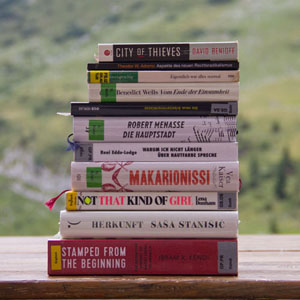 Bücher
Bücher Zuckersüß
Zuckersüß